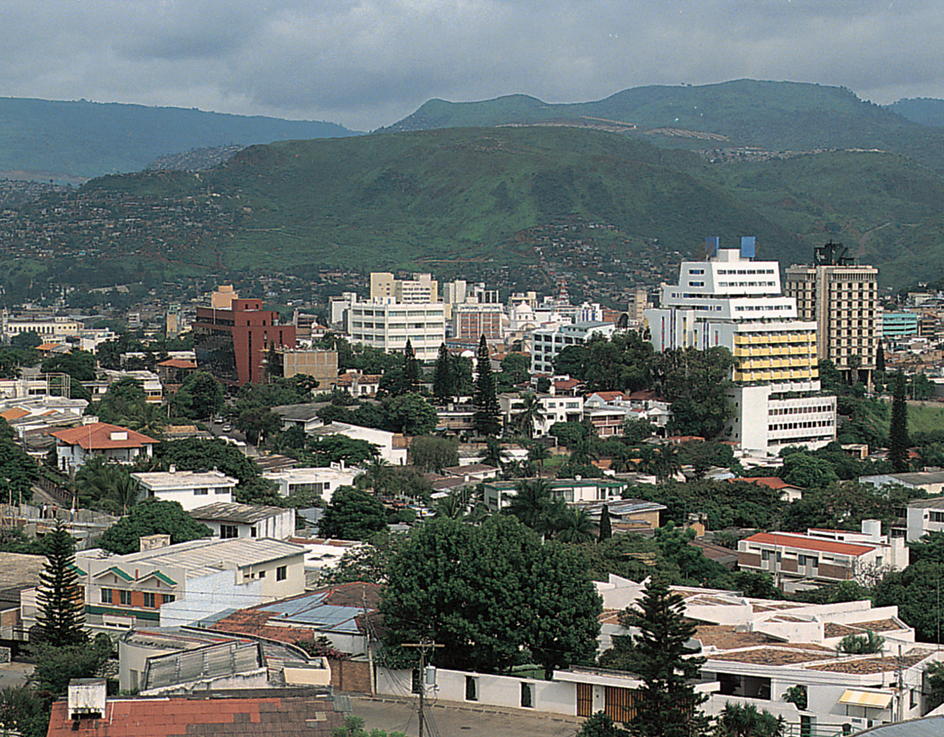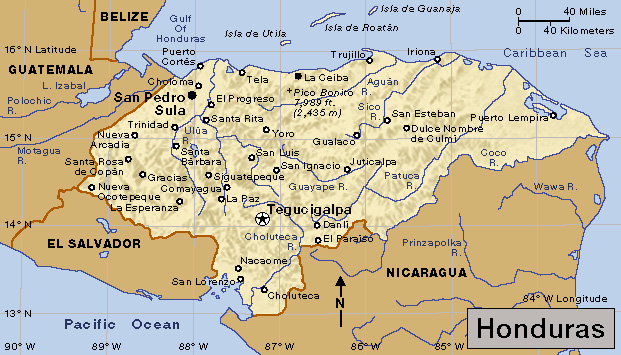Tegucigalpa, << teh `goo` see GAHL pah >> is the capital and largest city of Honduras. The municipality of Tegucigalpa has a population of 1,157,509. A municipality may include rural areas as well as the urban center. The city lies in the mountainous south-central part of the country. Mountains called El Picacho and El Berrinche border the city to the north. The Choluteca, Chiquito, and Guacerique rivers, along with other minor streams, flow through Tegucigalpa. The city has an elevation of more than 3,200 feet (975 meters), which results in pleasant weather throughout the year. The average daily high and low temperatures are about 85 and 65 °F (30 and 18 °C) in May, the warmest month, and about 76 and 60 °F (25 and 15 °C) in December, the coolest month.

During the 1500’s, Spanish conquerers attracted by silver deposits set up a mining camp on the eastern bank of the Choluteca River. In 1578 or 1579, the Spanish Crown officially established the mining community as Real de Minas de San Miguel de Tegucigalpa. Silver mining provided money for the construction of elaborate Baroque buildings. Mining revenue also aided the growth of agriculture and commerce, especially in the neighboring indigenous (native) village of Comayagüela.
In 1880, Tegucigalpa replaced Comayagua as the seat of the national government. The government built many public works in the new capital, including bridges, hospitals, parks, and schools. During the 1900’s, Tegucigalpa became the most important urban center in Honduras. Since 1938, Tegucigalpa and Comayagüela together have been governed as one municipality, called the Distrito Central (Central District), in the department of Francisco Morazán.

Urban planners began to modernize Tegucigalpa in the late 1900’s. New, modern buildings went up near the old, colonial-style Plaza Central. Shopping centers opened in the suburbs. Gated communities (residential communities that restrict entrance) appeared. In contrast, urban slums became more firmly established. The city’s population has grown rapidly in the early 2000’s. It increased from about 3/4 million at the time of the 2001 census to over 1 million in less than 10 years. Although Tegucigalpa remains the chief political and cultural center of Honduras, the northern city of San Pedro Sula has become the country’s economic hub.
